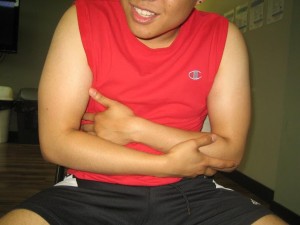Diverticulitis involves inflammation or infection of one or several balloon-like sacs or diverticula. This usually occurs among those who have diverticulosis in which a diverticulum develops a small-sized hole that enables bacteria from the intestines to be released.
Diverticulitis usually affects the sigmoid colon which is the last region of the large intestine prior to the rectum. The condition is quite common among those age 40 or older. It can be severe among those of any age but quite serious among older individuals particularly those using corticosteroids or other medications that suppress the immune system.
Signs and symptoms of diverticulitis
Diverticulitis usually triggers pain or soreness along with fever. The difference with diverticulosis is that diverticulitis does not trigger GI bleeding.

How is it diagnosed?
If the doctor is certain that an individual already has diverticulosis, a diagnosis of diverticulitis might be based on entirely on the symptoms. Nevertheless, other conditions that involve the large intestine and other organs in the abdomen and pelvis can trigger similar symptoms to diverticulitis such as color or ovarian cancer, appendicitis, abscess or non-cancerous growths on the uterine wall.
A CT scan of the abdomen might be required to determine if the condition is diverticulitis and not an abscess or appendicitis.
If the inflammation has reduced or the infection has been treated, the doctor performs a colonoscopy or barium enema X-ray study. These are performed to confirm the presence and severity of the diverticula as well as rule out colon cancer.
Treatment
In mild cases, it can be managed at home with adequate rest, liquid diet and oral antibiotics. The symptoms usually subside rapidly. Some might not require antibiotics.
After a few days, the individual can start a soft, low-fiber diet for 4-6 weeks. After 6-8 weeks, barium enema or colonoscopy can be carried out to assess the colon. After one month, the individual can start a high-fiber diet.
Those who have severe symptoms such as fever of 101 degrees F, abdominal pain, poor response to oral antibiotics and other indications of a serious infection or complications, hospitalization is required. At the healthcare facility, the individual is given fluids and antibiotics intravenously, bed rest and given nothing orally until the symptoms subside.
Most cases can be managed without surgery. If there is an abscess, it is drained by insertion of a needle via the skin and guided using a CT scan. In case drainage helps, the individual has to stay in the hospital until the symptoms are relieved and a soft diet is resumed.
